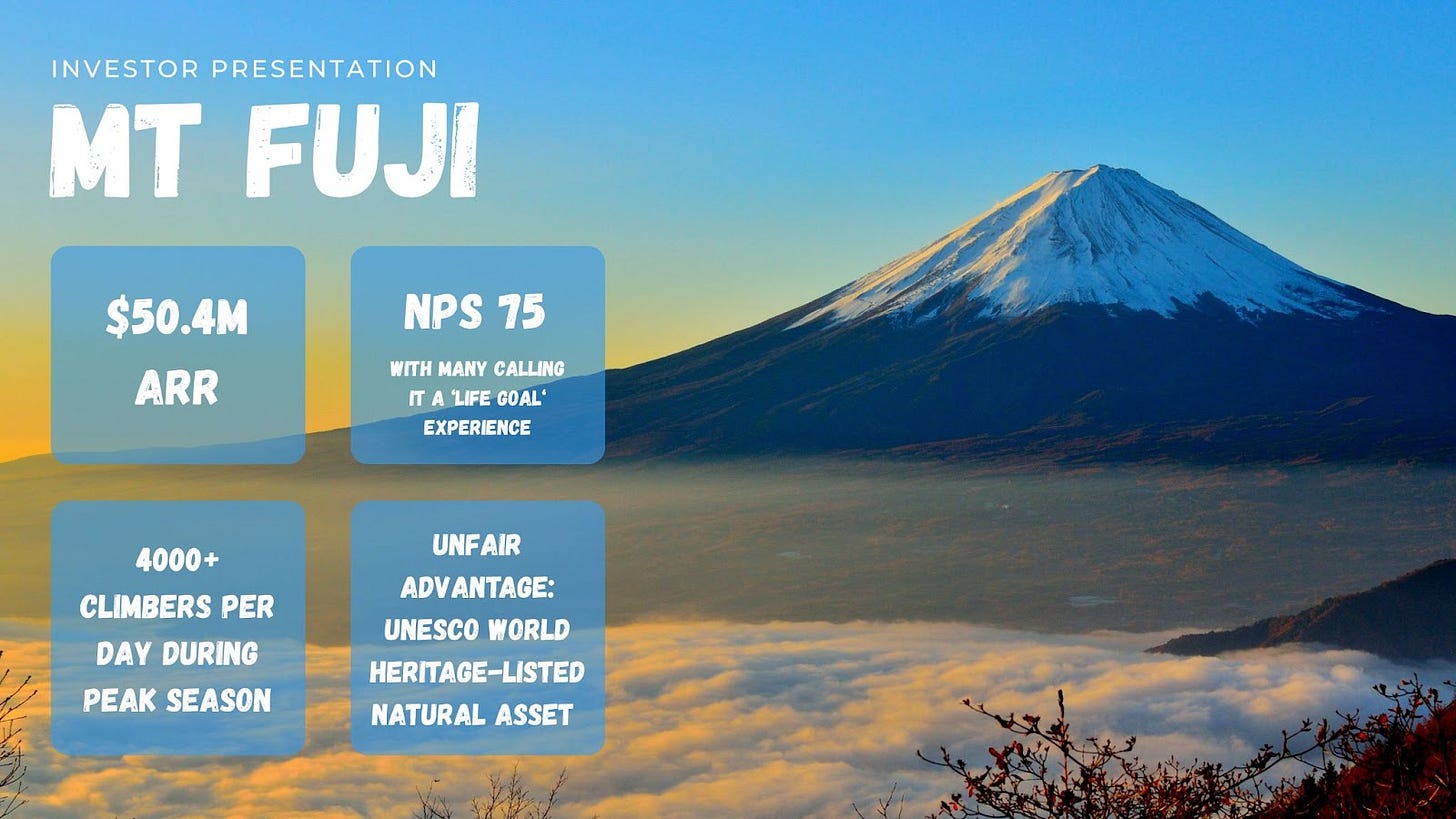Mt Fuji vs Mt Jade
First a quick business review of Mt Fuji, then we’ll get into the two mountains.
If Mt Fuji were a startup, would you invest? Here’s what their pitch would say:
Undeniable brand power, near-zero customer acquisition costs, high margins and a natural monopoly. We generate ~$50M in reliable seasonal revenue with long waitlist.
4000+ climbers per day during peak season
75-day annual window with near-100% capacity
$50.4M in ARR, including permits, huts, and on-mountain spend
80%+ of climbers pay $10 voluntary fee
18+ operational mountain huts with average $100 per-night spend
Featured in millions of photos, guidebooks, and global media annually
Unfair Advantage: UNESCO World Heritage-listed natural asset
Net Promoter Score: 70+ (“life goal” experience)
Giving Mt Fuji a 3-5x valuation you’re looking at $250M. With only 75 days at full capacity. Damn.
But what if I told you there’s another peak, taller, quieter, far less commercial, a true pre seed startup, and almost no one’s heard of it?
Meet Mt Jade, Taiwan’s hidden giant. I recently climbed both, and here’s how they compare, side by side.
TLDR:
Mt Fuji 3800m
Website to book, here. Open peak season July - Sept
The iconic Mt Fuji, with its snow-capped peak, is one of the most recognisable mountains in the world. It’s only open for climbing during Japan’s summer months (July - September), and permits fill quickly. There are 8 huts dotted up Mt Fuji, if you’re early enough you can book hut 7 or 8, closest to the peak, to make day 2 both a shorter climb and later wakeup.
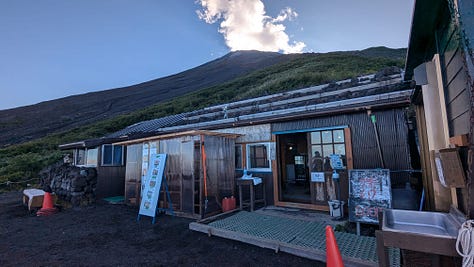

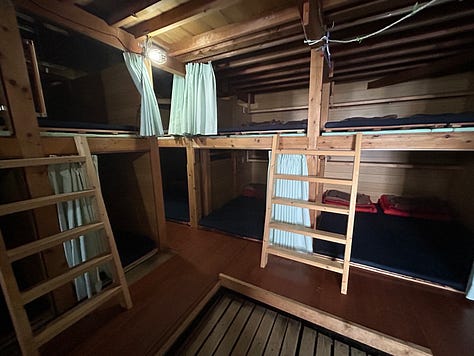
If you’re like me and wait far too long to book, you’ll be happy you even snagged a spot, even if it is one of the first huts on the mountain, only a 2 hour hike from the bottom. For The Setokan hut + dinner + breakfast we paid ¥14700 or around AUD $160 per person
Day 1
The day began in Kawaguchiko, a lakeside town just a couple of hours by bus from Tokyo. After a necessary Lawson pit stop (the world’s greatest ‘konbini’/convenience store chain), we started the Subashiri Trail. The track begins in lush vegetation, with a bed of large black rocks, before thinning out into shrubs and loose volcanic scoria, like hiking up a steep sand dune.
That night, we stayed in Setokan hut, a basic but comfortable mountain hut on the side of the beast of Fuji. Think bunk beds, a packed room of hikers, and a toilet with an unexpectedly heated seat. Only in Japan. Dinner was surprising again: in a country full of stunning Japanese cuisine, we had beef pattys and gravy. No complaints here, any food on a mountain is good food.
Day 2
With a 1100m climb ahead of us we woke at 2am and hit the trail in the cold (-5 celsius): layers on, headlamps beaming. The higher we climbed, the thinner the air, and the quieter the chatter. The final stretch came into view just past the 8th hut: the last 400m to the summit. But so did the crowd. We joined the 2500-strong queue of head torches on switchbacks up the single file path to the top. We slowed right down, each step getting colder as we made our way to the summit.
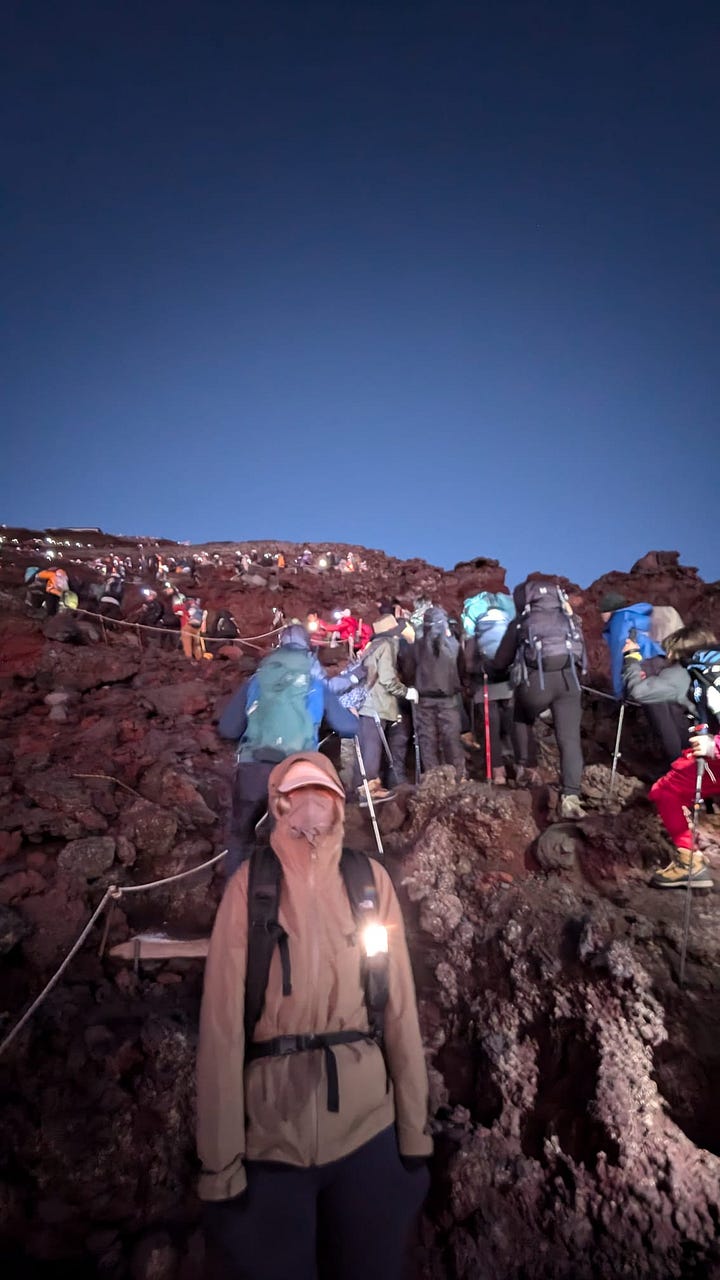

Finally after a painful 50 minutes, we hit the summit bang on sunrise, 5:10am. With a sip of sake to keep us warm we watched the sun rising over Japan. Magic.
A quick shout out to the way down the mountain, it was half the time but perhaps more challenging. A steep slope of volcanic scoria, aka large pebbles that you almost need to run down as if you were skiing. Lots of opportunity to fall and if you’ve got bad knees..all the best.
Mt Jade (Yushan) 3952m
Website to book, here. Open year round.
Ok now on to Mt Fuji’s lesser known cousin. Taiwan’s tallest peak, Yushan (Mt Jade), stands even taller than Fuji. It’s far less known outside Asia but arguably more special. Access is controlled by a national park permit system via lottery, one for locals, and a separate (easier) one for foreigners. Front-end devs and UX designers will shudder at the website functionality.
We met a Taiwanese family who waited two years to secure a permit for locals (where there is a long waitlist). On our hike, there were only six foreigners total. It felt remote, and wonderfully uncommercial.
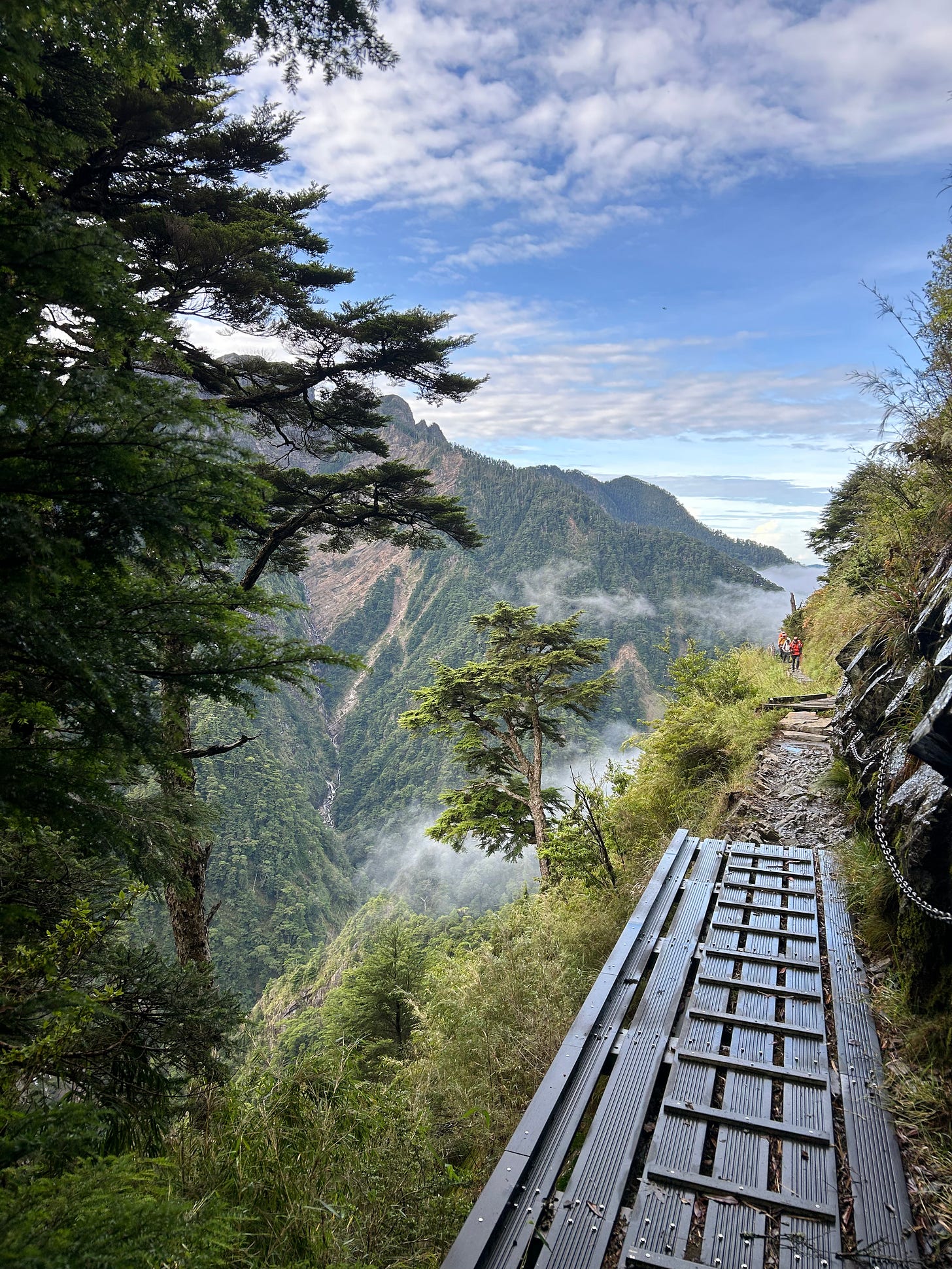
Day 1
After a long bus from Chiayi and a night at the base hut, we woke early, fuelled by canned coffee and bananas. A quick stop at the police station to sign in (a national park formality), and we began the steady ascent.
The way up you’re surrounded by lush alpine forest and sweeping mountain ranges, the views are breathtaking. The path is often fairly narrow and you’ll see some hikers wearing helmets in fear of the falling rocks. We didn’t realise this was a good idea until day 2...a few hikers have been struck in the past and fallen off the mountain.
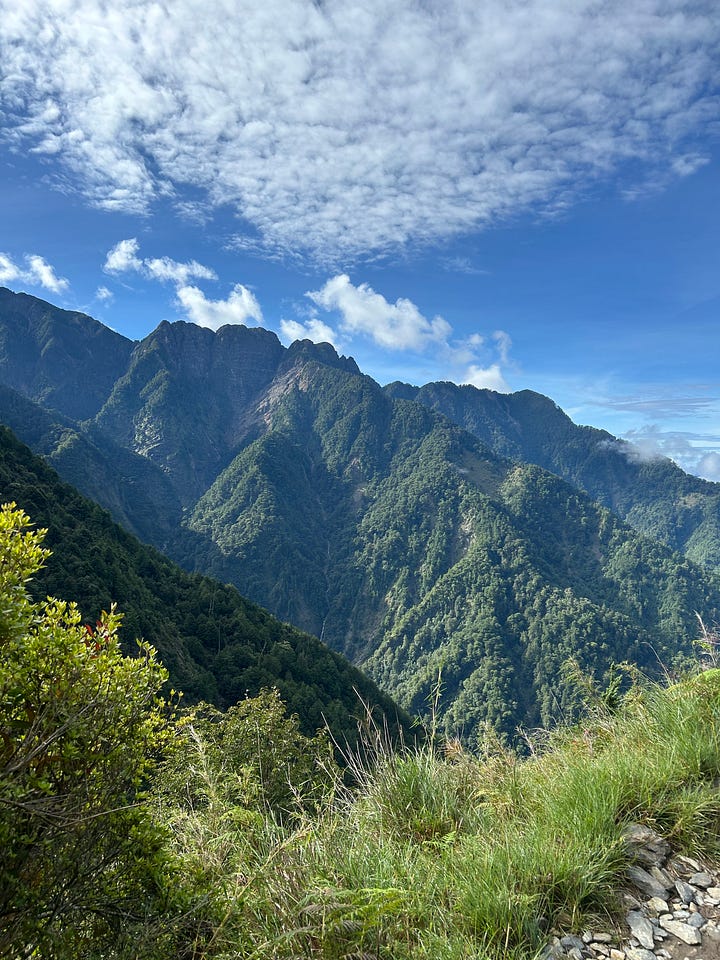


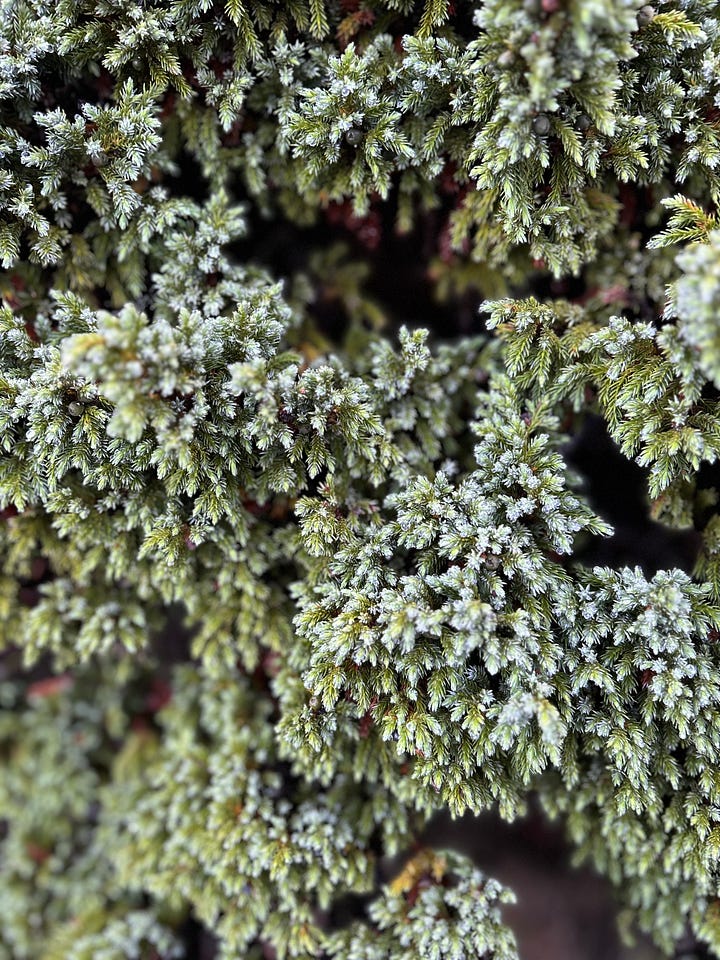
After roughly 3.5 hours of hiking, we arrived at Paiyun Lodge (3,402m), a red wood hut nestled among pine forests and clouds. Dinner was possibly the best mountain food I’ve ever had, a steaming bento box of grilled chicken, rice, pickled veg and a rich beef noodle soup. No hot toilet seats here, but the warmth came from the friendly faces and quiet atmosphere (just 50 or so hikers).
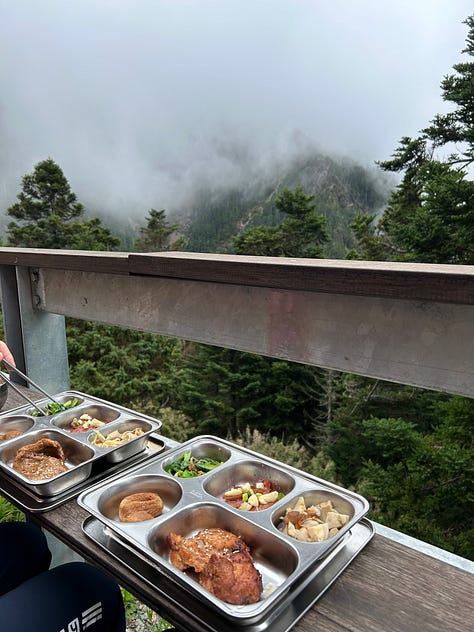

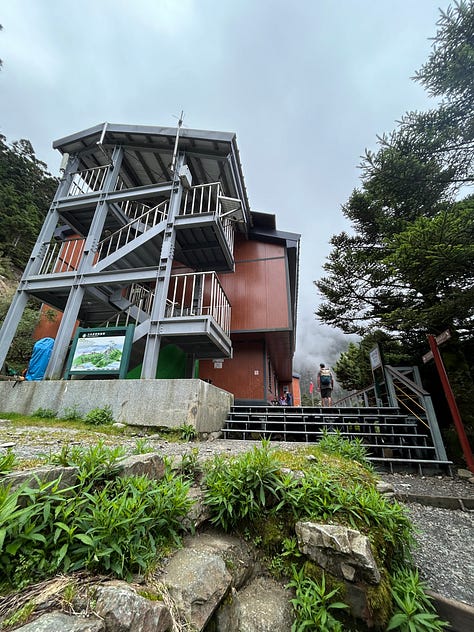
Day 2
Another 2am wake-up, another headlamp-lit climb. Breakfast was steamed buns, congee, and pickled fish, traditional and an acquired taste. We began our 500m ascent to the top, needing to control our pace so that we didn’t arrive too early and freeze at the top. We reached the top with an incredible view of countless smaller peaks and just a few people to share it with. An incredibly special experience.
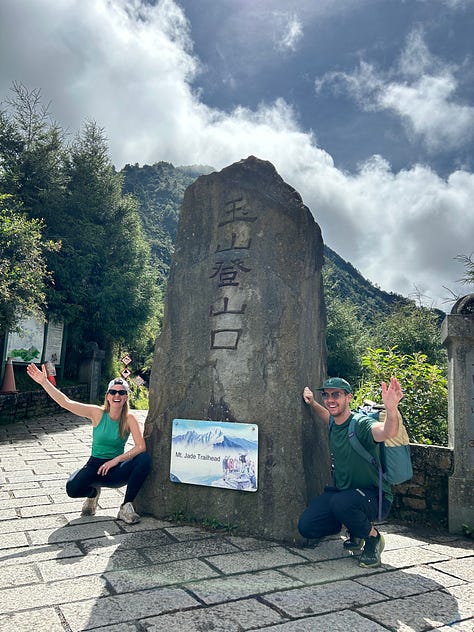
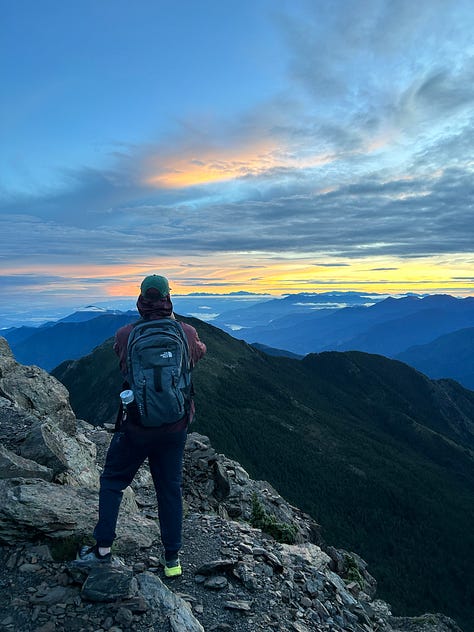

Quick PSA (and even more reason to wear a helmet)..Just hours later, on our way down the mountain, while resting at a small shelter, the mountain started to shake. Initially we thought it was wind but the hut shook and squealed violently. Both our phones blared: “Presidential Alert: EARTHQUAKE SEEK COVER”. No shelter, no escape. A steep cliff on one side, falling rocks on the other. We sprinted down and three hours later we found the trailhead, only to discover a landslide had blocked the road. Thankfully, a kind Japanese hiker translated for us and found us a ride back to town.
Both mountains are magic. Mt Fuji is the postcard picture, a well oiled tourist machine, iconic, and crowded. Mt Jade is the hidden gem, quiet, rugged, rewarding. If I were to climb one again, it’s Mt Jade every time.



